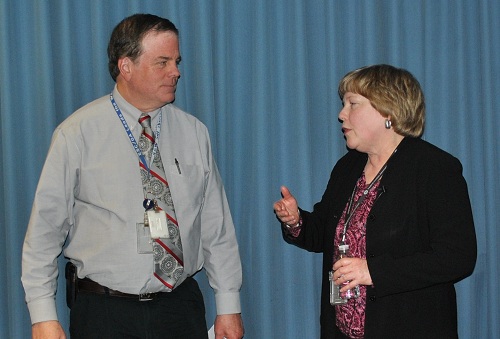 Compare the commercial airliners of forty years ago to those of today. Planes are still made of old-fashioned aluminum. Their guts are still filled by passengers and crew. They still defy gravity and they are still the fastest mode of transportation for the buck.
Compare the commercial airliners of forty years ago to those of today. Planes are still made of old-fashioned aluminum. Their guts are still filled by passengers and crew. They still defy gravity and they are still the fastest mode of transportation for the buck.
But today the brains of airplanes are the sum of a spectacular web of automated computer systems that control everything from airspeed to landings. Some even think that there may be a day in the not too far off future when commercial airplanes will be fully automated. (Imagine the view from first class if there were no cockpit in the way.)
There are certainly fewer pilots (two) in the cockpit today than a few decades ago (three, four, even five)— but full automation is still speculation. Here are a few big reasons why:
Ninety percent of flights do not go exactly according to the pre-flight plan. Adverse weather is a threat in nearly 60 percent of normal flights.
Malfunctions happen in 20 percent of flights.
If an airplane’s brain is represented by automation, then pilots represent the plane’s eyes and ears, to see, sense, and be aware when the brain needs input. A tin can 30,000 feet above solid ground is no place to be without eyes and ears.
It’s a misconception that more automation leads to less responsibility for pilots, according to Kathy Abbott, Chief Scientific and Technical Advisor for Flight Deck Human Factors at the Federal Aviation Administration, who spoke recently at Volpe.
The human brain will always be just as important to aviation safety as the plane’s brain. |
In fact, automation means more pilot responsibility. Not only do pilots need baseline flying skills, they need to be good systems managers. They need to monitor the automation system, provide new information to the system mid-flight, and still have the manual flying skills to take over if the system fails.
“It’s not the human or the system,” Abbott said. “We have to look at this as an integrated whole.”
What happens when automation and pilots don’t integrate well? When the pilot is unfamiliar with a particular aircraft model or lacks recent training in basic flying maneuvers? Planes can go off the runway, as in the Southwest flight 1248 at Chicago Midway in 2005, and Asiana flight 214 at San Francisco in 2013. They can crash, as in a UPS cargo jet in 2013. Most tragically, people may die.
The challenge, Abbott explained, is a psychological effect that can happen for pilots trained during this current era of heavy automation. Commercial airlines encourage automation, and pilots today often have less practice flying manually than their predecessors. When pilots are continually told that a plane is best flown by a computer, they can delegate too much authority to automation—a phenomenon popularly called automation addiction.
The continued safety of the nation’s commercial airspace—and flying is by far the safest way to travel long distances—depends on how pilots are trained and how often they are trained, because well-trained, continually trained pilots will be critical to safe flying for a long time. Pilots manage unexpected situations, provide flexibility mid-flight, and address errors from other people throughout the flight system.
While more advanced automation is certainly the future of air transportation, Abbott stresses that until technology becomes completely failsafe and foolproof, the human brain will always be just as important to aviation safety as the plane’s brain.
 Compare the commercial airliners of forty years ago to those of today. Planes are still made of old-fashioned aluminum. Their guts are still filled by passengers and crew. They still defy gravity and they are still the fastest mode of transportation for the buck.
Compare the commercial airliners of forty years ago to those of today. Planes are still made of old-fashioned aluminum. Their guts are still filled by passengers and crew. They still defy gravity and they are still the fastest mode of transportation for the buck.